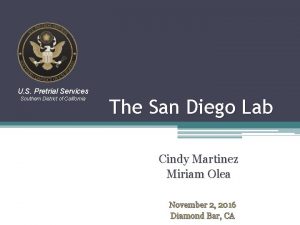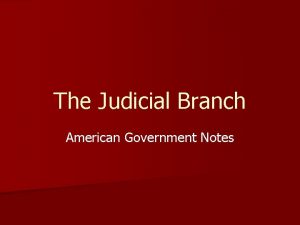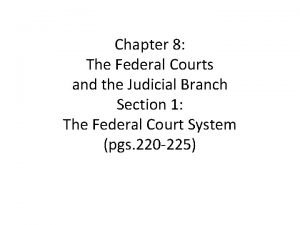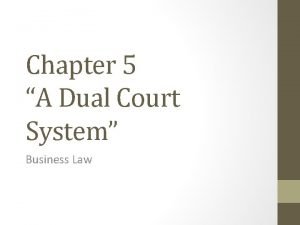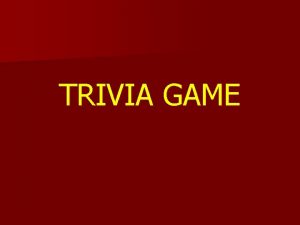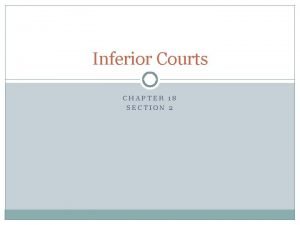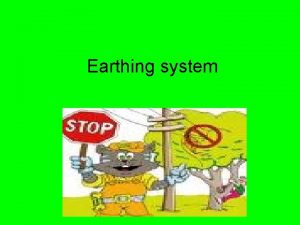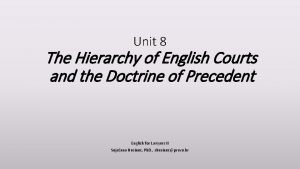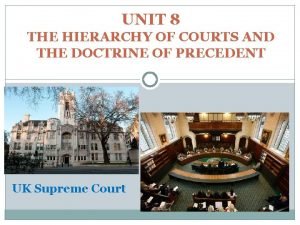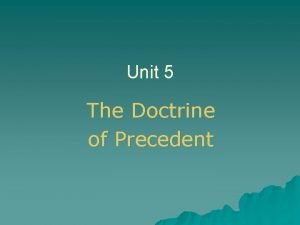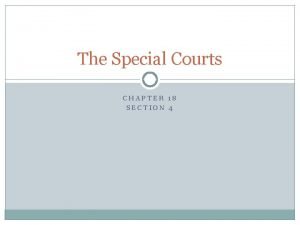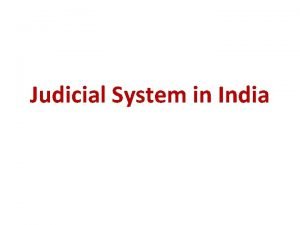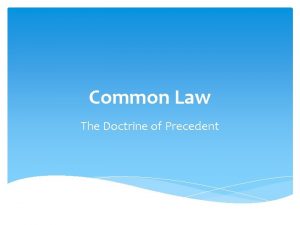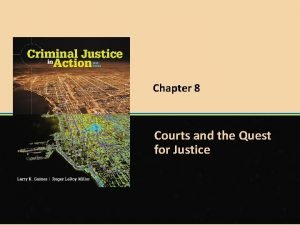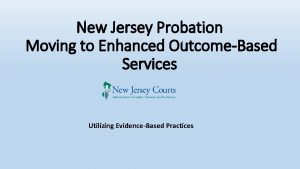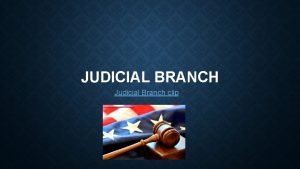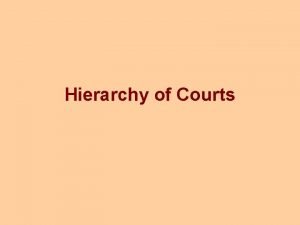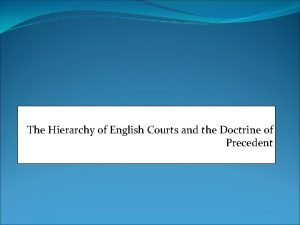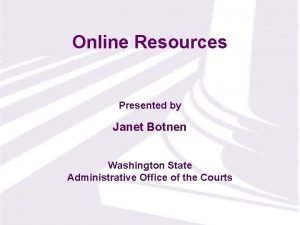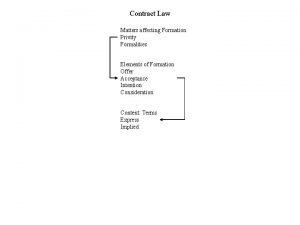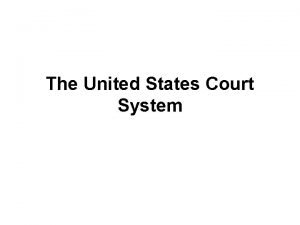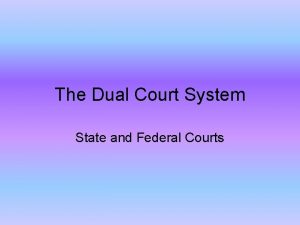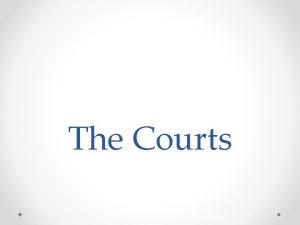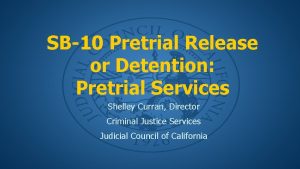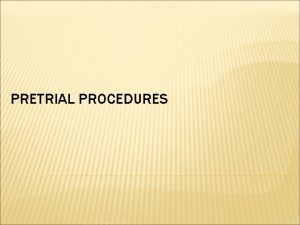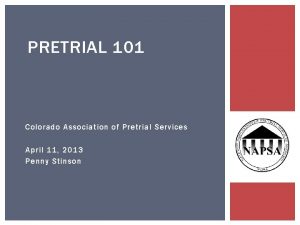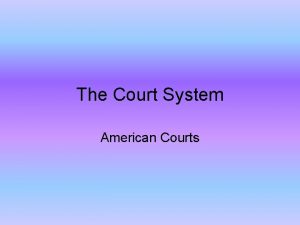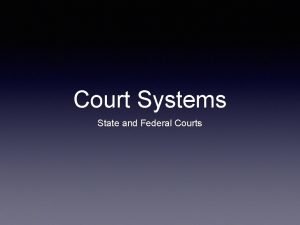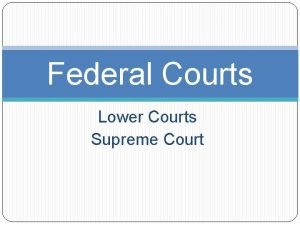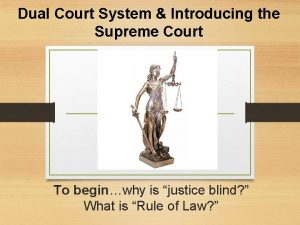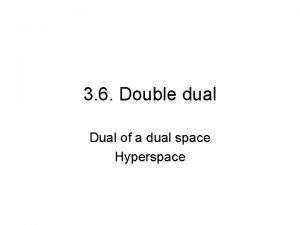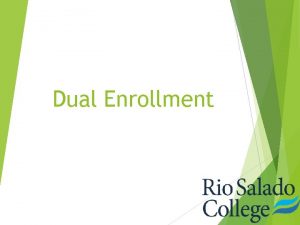Courts and Pretrial Processes Dual Court System Separate


























- Slides: 26

Courts and Pretrial Processes

Dual Court System Separate state and federal court systems ¡ Federal courts deal with matters of federal law ¡ State courts deal with matters of state law ¡ Native American tribal courts constitute a third system in several states ¡

The Dual Court System ¡ Whether a case enters through the federal or state court system depends upon which law has been broken. The right of exists in either system.

State Court Structure ¡ Arranged like a pyramid l l l One court of last resort Intermediate appellate courts Trial courts General jurisdiction ¡ Limited jurisdiction ¡ l ¡ Some specialty courts Law defines jurisdiction of each

Trial Courts ¡ Handle determinations of guilt and sentencing l Trial courts of limited jurisdiction Handle 90% of all criminal cases ¡ Misdemeanors ¡ Preliminary matters in felony cases ¡ Relatively informal ¡ l Trial courts of general jurisdiction Felony cases ¡ Courts of record ¡

State Appellate Courts Rights of appeal determined by law ¡ Review of previous trial for procedural errors ¡ Possible outcomes: ¡ l l l Order a new trial Allow defendant to go free Uphold (sustain) original verdict

State Court of Last Resort Highest state court ¡ Usually called the “State Supreme Court” ¡ Reviews issues of law appealed from the trial courts ¡

Court Structures of Alaska (Reformed) and Georgia (Unreformed) ¡ Reformers have called on states to reduce the number of courts, standardize their names, and clarify their jurisdictions.

Specialty Courts Focus is on a particular kind of case ¡ Specialization can be based on different criteria: ¡ l l l Alleged perpetrator (e. g. juvenile court) Type of crime (e. g. drug court) Factors associated with the crime (e. g. gun court)

Federal Court Structure The United States Supreme Court ¡ The United States Courts of Appeal ¡ The United States District Court ¡

Federal Court Structure: U. S. District Court Each state has at least one Federal District ¡ 94 Districts throughout the U. S. ¡ Primary trial court of the U. S. system ¡

Federal Court Structure: Court of Appeals Also called the Circuit Courts because the jurisdiction covers a large geographical area ¡ Usually located in major cities ¡ Reviews decisions of lower courts ¡ Cases involve constitutional issues ¡

The U. S. Supreme Court Highest court in the land; Court of last resort ¡ Decisions set precedents ¡ Allowed to choose the cases it hears ¡ 9 Justices (1 Chief Justice, 8 Associate Justices) ¡

The U. S. Supreme Court (contd. ) Full Court hears about 100 cases per year ¡ 4 Justices must vote to hear a case (Rule of Four) ¡ Majority, minority & dissenting opinions ¡

Effective Management of State Courts ¡ Effective state court management of huge caseloads is problematic l l l ¡ Fragmented structure Inadequate resources Uneven quality of judges A proposed solution is a unified court system with four goals: l l Eliminate overlapping and conflicting jurisdictional boundaries Create hierarchical and centralized court structure Courts funded by state government Separate civil service personnel system

Functions of the Judge Adjudicator ¡ Negotiator ¡ Administrator ¡

Duties of the Judiciary Oversee conduct in court ¡ Settle questions of evidence and procedure ¡ Guide questioning of witnesses ¡ Instructs the jury about law ¡ Decide case when a jury is not used (bench trial) ¡ Decide on sentence ¡

Actions of a Trial Court Judge in Processing a Felony Case ¡ The judge ensures that legal standards are upheld, maintains courtroom decorum, protects the rights of the accused, meets the requirement of a speedy trial, and ensures that case records are maintained properly.

Judicial Qualifications vary by state ¡ Typical qualifications include: ¡ l l l resident of the state licensed to practice law member of the state bar association 25 years old or older less than 70 years old

Judicial Selection Systems Appointment ¡ Partisan election ¡ Nonpartisan election ¡ Missouri Plan (a. k. a. The Merit Plan) A combination of: ¡ l l Appointment and Election

Selecting Federal Judges Appointed by the President ¡ Confirmed (advice and consent) of the Senate ¡ Serve for a period of good behavior (normally life) ¡

Pretrial Processes ¡ Purpose of pretrial processes is to ensure due process of law l Force prosecutors and judges to: Review the evidence ¡ Make sure probable cause exists ¡ Dismiss unnecessary or unjust charges (filter out) ¡ ¡ Defendant is exposed to assemblyline atmosphere of the lower criminal courts

Pretrial Processes (contd. ) ¡ Arraignment l l l Often the first formal meeting between prosecution and defense Charges are read and plea is entered Prosecutors begin to evaluate the case Don’t want to waste limited time and resources ¡ May decide to drop case ¡ ¡ Preliminary hearing l Defense may challenge the evidence through motions

Pretrial Release: Bail ¡ Based on judge’s view of: l l ¡ The seriousness of the crime The defendant’s prior record The Eighth Amendment does not guarantee a right to bail, but prohibits excessive bail l l Amount of bail should be high enough to ensure the defendant appears in court for trial – no higher. Critics argue the bail system discriminates against poor people

Bail Amounts for Felony Defendants by Type of Offense ¡ The amount of bail varies according to the offense.

Pretrial Release Factors Nature of the crime and offender ¡ Criminal background ¡ Defendant’s cooperation ¡ Impact on the community ¡ Victim’s opinion ¡
 San diego pretrial services
San diego pretrial services Bexar county pretrial diversion program application
Bexar county pretrial diversion program application The dual court system in the u.s. means
The dual court system in the u.s. means Federal court system structure
Federal court system structure What is the us dual court system
What is the us dual court system Is there a basketball court above the supreme court
Is there a basketball court above the supreme court X factor
X factor Concurrent processes are processes that
Concurrent processes are processes that Chapter 18 section 2 the inferior courts
Chapter 18 section 2 the inferior courts Protective earth connection
Protective earth connection Algo and amal
Algo and amal Hierarchy of uk courts
Hierarchy of uk courts Levels of court uk
Levels of court uk Hierarchy of uk courts
Hierarchy of uk courts Chapter 18 section 4 the special courts worksheet answers
Chapter 18 section 4 the special courts worksheet answers Squash court wolverhampton
Squash court wolverhampton Judicial hierarchy in india
Judicial hierarchy in india Court hierarchy
Court hierarchy 4 levels of state courts
4 levels of state courts Tteap
Tteap Courts hierarchy
Courts hierarchy New jersey courts
New jersey courts Decide whether each description fits trial courts only
Decide whether each description fits trial courts only Jurisdiction of supreme court
Jurisdiction of supreme court English courts hierarchy
English courts hierarchy Inside courts wa
Inside courts wa When will the courts imply terms into a contract
When will the courts imply terms into a contract
